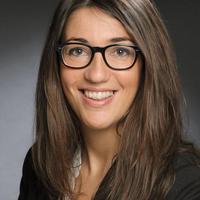Assistant Professor Ilaria Testa at Cellular Biophysics gets funding from SSF

Congratulations Ilaria to a 12 000 000 SEK grant from SSF!
Projekt: LS-RESOLFT for intact live tissues nano-imaging
Summary
Synapses are the basic elements of neuronal connections and circuit formations; their function regulates fundamental processes such as learning and thinking but their defects are signs of human diseases such as Parkinson and Alzheimer. The activity and spatial arrangement of those subcellular compartments is difficult to analyze using conventional optics and electrophysiology, since neuronal organelles and protein clusters are small and tightly spaced. The solution to this problem can come from the field of super-resolution fluorescence microscopy (SRM). However, the current approaches to SRM are still far from reaching this goal. Common PALM and STED optical implementations are based on collinear optics, which limits their ability to image deep inside tissues. High background, scattering and aberration rapidly decrease the image quality. My aim is to fill this gap, by developing, for the first time, Light Sheet RESOLFT, a microscope that enables SRM imaging of synaptic proteins in living organisms or tissues, where neuronal connections are preserved. The microscope will be based on the RESOLFT concept, which I have recently co-pioneered, because of its potential in reducing photo-damage without giving up the high spatial resolution (30-50nm). Additionally, the light sheet orthogonal schemes will enable unprecedented optical sectioning. Overall, my project will introduce a novel paradigm to imaging in the life sciences, which will enable live nano-imaging of tissues.
Popular science description
A number of human activities like thinking, learning and speaking rely on neuronal connections and their ability to function. Specialized protein machineries located in sub neuronal compartments such as synapses and the axon initial segments mediate those connections. The function and spatial arrangement of those compartments is difficult to analyze using current methods such as conventional fluorescence microscopy or electrophysiology, since neuronal organelles and protein clusters are small and tightly spaced. My aim is to arm the life science community with a powerful microscope able to open a new window to the interior of cells and tissues, especially to the synapses. To do so we need to gently interrogate the neurons in order to preserve their ability to form connections. In other words, we need to look at them in tissues where they are still able to function and communicate with each other. Our new technology will be especially designed to penetrate tissues only with light in a minimal invasive way to reduce any risk of damage. Importantly, these features will come along with an unprecedented ability to look at small proteins. How they function, where they are located, how fast they move, how they behave during activity, when they start to malfunction, how fast they are substituted? Addressing such questions at the molecular level will be extremely helpful to better understand synaptic activity. This project requires not only technical skills but also the possibility to be exposed to the right questions, to understand the needs of the life science field, to work in a true multidisciplinary environment. It will be best developed in a place, which supports creativity and technological development and promotes scientific interaction among scientist of different background. I moved to Sweden with the goal to develop new imaging tools for a better understanding of the brain. The technology described here has the potential to meet this challenge with a high impact within neuroscientific research. Finally, many human diseases such as Parkinson or Alzheimer involve degeneration of neurons with defects in the synaptic protein machinery. A better look at their molecular function can be an important first step towards rapid and accurate diagnosed screening methods.
